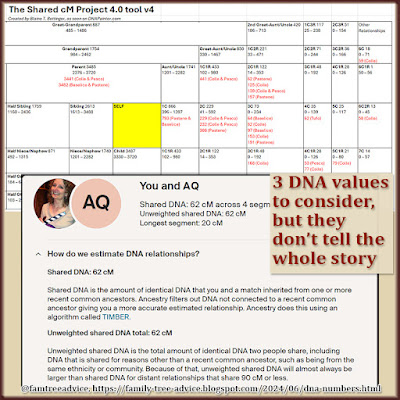Five weeks. That's how long I've been grinding away on one huge family tree project. I wrote about my missing source citations project 5 weeks ago and have been working on it ever since.
How did I get into this mess of missing citations? I forged ahead with my goal of connecting everyone from my ancestral hometowns. I skipped the citations because all the vital record images are on my computer. And I spent time renaming the images to make them searchable.
 |
| Parallel genealogy tasks get you to the goal while keeping things interesting. |
Since I can find any document again in a snap, I postponed citations in favor of family building. But I went too far.
Using Family Tree Analyzer, I generated a list of 70,000 people with zero source citations. OMG! My entire tree has 80,867 people and 70,000 of them have no citations?
I designed a process that let's me make measurable progress each day. First I made a change to the spreadsheet I created with Family Tree Analyzer. I sorted it by 2 fields:
- Relation to Root. This lets me work on closest relatives first. I have tons of people with very distant relationships to me.
- Surname. This groups siblings together so I can work on an entire family without moving around in my family tree a lot. That saves time. I search for one name and work through the whole family.
But I still have more than 69,000 people left to address! After 5 weeks!!
The sheer volume is why I had to put two things in place to make me efficient and keep my sanity.
Efficiency
I'm very good about adding citations the moment I find documentation on Ancestry.com. It's the tons and tons of Italian vital records I've let slide. About 99% of these documents come from the Antenati Portale. Their missing citations will all follow the same pattern.
That means I can use a single template and make a few edits for each fact. I'm a big believer in templates. Think of a source citation template as a stencil. A stencil makes it easy to repeat a perfect pattern or make uniform letters time after time.
This is my template for Italian vital records:
I change the variables to match the document:
- PROVINCE becomes the province in Italy. In my family tree, the province is usually Benevento, Avellino, Campobasso, or Foggia.
- YEAR becomes the year of the book in which you can find the document.
- TYPE can be birth, death, marriage, marriage banns, and a couple of other types. I like to use the Italian words: nati, morti, matrimoni, matrimoni pubblicazione.
- TOWN is the town in Italy. They store Italian vital records by town.
- The xx's become the record number on the document, the image number and number of images in the book. For example, document 20, image 12 of 25.
- URL is the link for the exact document on the Antenati portal. (Sometimes the link goes to FamilySearch.org.)
- The next piece, https://iiif-antenati.san.beniculturali.it/iiif/2/TARGET/full/full/0/default.jpg, is a fabulous trick. It links to a high-resolution version of any image on Antenati. Every document URL on Antenati ends in a 7-character code—a combination of numbers and letters. If you replace the word TARGET in the URL above with that code, you can go to the high-res image and save it.
Here's an example. I edit the template and the source citation for the 1818 marriage of Antonio Maria Teresa becomes:
Go ahead and click those 2 links. You'll see the book version and high-resolution version of the marriage record.
Because I know each citation takes only a minute or two to complete, I keep pushing. One more family before I take a break from my desk. Another family before I take a sanity break.
Sanity
Some days I finish as many as 110 source citations. But it gets tedious after a few hours. That's when I need to save my sanity while still making progress.
When I start losing motivation, I switch to a parallel task. A parallel task is another goal I'm working on that adds a new name or date to my family tree. That new detail needs a source citation. And while I'm there, I check their immediate family. I make sure they all get their source citations.
One parallel task is finding the birth record of an out-of-towner who married into my family tree. I sort everyone in my family tree by birth date and hunt down those with an incomplete birth date. I've been having great success, so it's a gratifying project.
Another parallel task is adding cousins from a town I haven't explored fully. The other day I brought one ancestor's family forward a few generations. Then I found one of these cousin's granddaughters in my DNA matches. Now I know this cousin came to America. And my brother used to live in his hometown.
This combination of efficiency and sanity are how I tackle even the most tedious tasks. It's been my mental trick since I was a kid. I may follow an unusual pattern, but I get the job done.
Do you have an ambitious family tree project to tackle? How can you chop it up, mix it up, and keep things interesting as you make progress?




